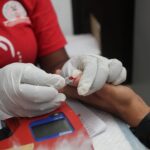Nigeria is pressing ahead with one of its most ambitious agricultural endeavours. The federal government announced plans to produce ₦160 billion in output value from wheat production for the 2025/2026 dry season, signalling a renewed commitment towards food sovereignty and reduced import dependence.
With 40,000 hectares earmarked and 80,000 farmers registered, the initiative constitutes a sequel to the country’s renewed investment in dry-season wheat production. Earlier interventions had supported more than 107,000 farmers in the 2023/2024 season and almost 280,000 in 2024/2025.
The programme will deploy agricultural extension agents, enforce the quality control of fertiliser and seeds and extend the production of wheat to sixteen states, including Cross River, which joined the wheat belt last year.
Research driving climate-resistant wheat
This intervention builds on several initiatives targeted at increasing staple-food production and nipping perennial import reliance in the bud.
Olam Agri, implemented by the Agricultural Research Council of Nigeria (ARCN), in collaboration with research institutes like the Lake Chad Research Institute (LCRI), develops heat-tolerant and high-yielding varieties suitable for the changing climate of Nigeria.
LCRI, particularly, has been central to seed development in the Northeast, collaborating with international partners such as CIMMYT in expanding the seed base of Nigeria through improving cultivars.
Other initiatives include the Anchor Borrowers’ Programme by the Central Bank of Nigeria, supporting wheat farmers with credit, aggregation support and linkages to millers. Though criticised for its repayment gaps, ABP remains one of the largest financing models to have opened the door for thousands of smallholder wheat farmers.
Similarly, the Nigerian Stored Products Research Institute (NSPRI) is working to minimise post-harvest losses, particularly among wheat farmers in northern states, whose productivity is undermined by poor storage.
Strengthening extension and training
Private-sector and donor-supported projects continue to play major roles. The USAID Feed the Future Nigeria Agricultural Extension and Advisory Services Activity strengthens extension delivery in wheat-growing communities.
In the same vein, the Sasakawa Africa Association and the Technologies for African Agricultural Transformation train farmers on irrigation, land preparation, fertiliser optimisation and mechanised harvesting.
Large millers, including Flour Mills of Nigeria, BUA Foods, and Crown Flour Mill, have equally announced support for production initiatives in the country.
FMN’s Wheat Development Programme engages with farmers in Kano and Jigawa to provide input supplies coupled with guaranteed offtake, while Olam’s Seeds for the Future initiative develops locally adaptable seed varieties. These private sector commitments will help bridge the gap between farm output and industrial demand.
Backed by the World Bank, the Transforming Irrigation Management Project also creates better irrigation infrastructure in Kano, Jigawa, Sokoto and Zamfara—critical regions to Nigeria’s wheat ambitions.
Altogether, these existing solutions form the backbone of Nigeria’s push for wheat self-sufficiency and complement the proposed 40,000-hectare dry-season drive of the federal government.
Though there are still challenges, ranging from climate pressures to insecurity, the web of public programmes, research institutions, donor projects and private sector initiatives in Nigeria shows growing national alignment toward one goal: producing more of the food the country eats and reducing costly import dependence.
Summary not available at this time.






